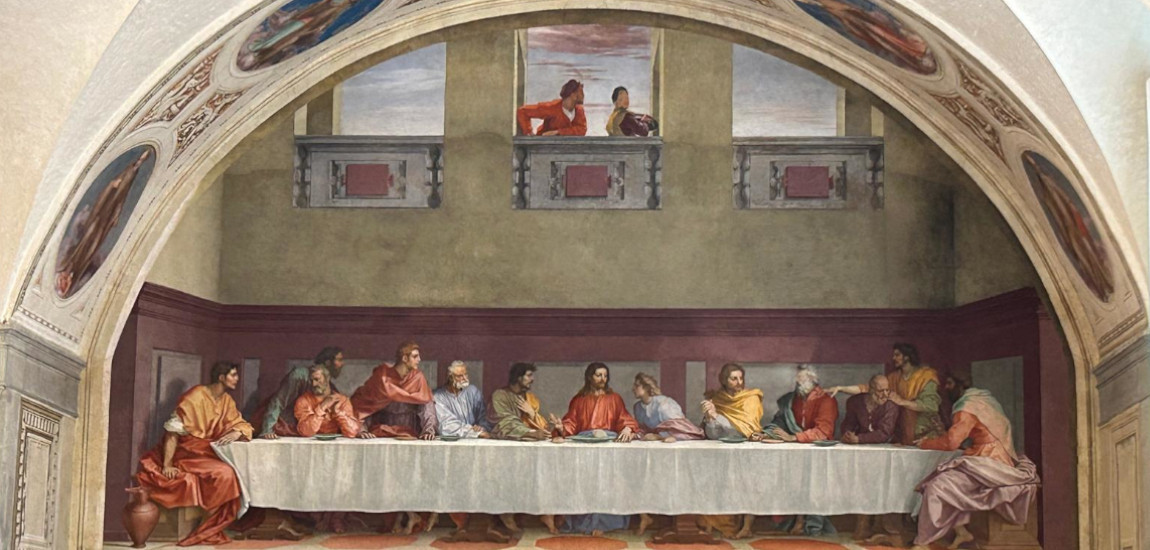
Museum of the Cenacolo by Andrea del Sarto in Florence
Beyond the Campo di Marte station, in the San Salvi area, lies one of the greatest
masterpieces of the sixteenth century: the Last
Supper by Andrea del Sarto, the "painter without errors", painted
between 1511 and 1530.
Andrea del Sarto was twenty-five
years old when he began working on the fresco in the refectory of the Church of San Michele in San Salvi,
founded in 1048 by Vallombrosan monks. The church is famous today mainly for
two reasons: the massacre of the monks of San Salvi by the simoniac bishop
Pietro Mezzabarba, which occurred between 1065 and 1066, and for the wonderful
sixteenth-century works found inside.
Among these we find works by Pontormo such as Faith and Charity, on
the opposite side of the refectory, The Madonna with child enthroned between
Saint Francis, Saint Zanobi and two kneeling donors, by Raffaellino del Garbo,
one of Andrea's masters, a group of paintings by Plautilla Nelli (1524–1588), an important painter of the sixteenth
century and many others.
The great masterpiece, however, is Andrea del Sarto's Cenacolo, on which
the painter began working starting from the under arch. Here he paints five
tondos with the Trinity in the centre, San Giovanni Gualberto and San Salvi on
the left, San Benedetto and San Bernardo degli Uberti on the right.
Alternating the cicles is a
grotesque decoration in monochrome white on a yellow background probably painted
by Andrea di Cosimo Feltrini, who later also decorated the Cappella dei Priori
in Palazzo Vecchio.
Shortly after 1511 the construction
work on the new wing of the monastery was interrupted and so was the painter's
work, which resumed around 1526 and concluded in about a year.
The work was celebrated immediately,
and legend has it that the troops sent by the Republic in 1529 to destroy the
buildings outside the walls to prevent the troops besieging Florence from
finding refuge there, were so struck by its beauty that they did not touch the
church.
Andrea took inspiration from Leonardo da Vinci's Last Supper and therefore
from the life study of workshop assistants in order to recreate the expressions
that characterize the various characters.
The work is in fact characterized by
psychological subtlety, there are no
dramas or exasperated attitudes, but every
gesture is studied and expresses an emotion.
The color is bright and very
different from that of tradition.All this contributes to making it
one of the great masterpieces of the sixteenth century.
Despite this, the Museum of the Cenacolo by Andrea del Sarto is
not much visited as it is located off the tourist routes of the historic
center, although very close. For this reason, the experience of observing this
masterpiece in an often almost empty room is absolutely not to be missed!



